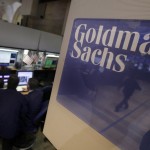 Oil prices fluctuated on Friday but remained fairly unchanged in the early European session after trade data showed Chinas targeted economic expansion was achievable and ongoing clashes in the streets of Tripoli continued to spur concern over Libyas crude supply. Market players however remained cautious before the release of key U.S. employment data after a larger-than-expected expansion of the U.S. economy in the third quarter spurred speculations the central bank might scale back its bond purchases sooner than expected as the U.S. economic recovery seemed sustainable. Signs of diplomatic progress between Iran and the West during an ongoing meeting in Geneva pressured the market.
Oil prices fluctuated on Friday but remained fairly unchanged in the early European session after trade data showed Chinas targeted economic expansion was achievable and ongoing clashes in the streets of Tripoli continued to spur concern over Libyas crude supply. Market players however remained cautious before the release of key U.S. employment data after a larger-than-expected expansion of the U.S. economy in the third quarter spurred speculations the central bank might scale back its bond purchases sooner than expected as the U.S. economic recovery seemed sustainable. Signs of diplomatic progress between Iran and the West during an ongoing meeting in Geneva pressured the market.
On the New York Mercantile Exchange, WTI crude for delivery in December traded at $94.26 per barrel at 8:33 GMT, up 0.06% on the day. Prices held in a days range between $94.66 and $94.17 a barrel. The U.S. benchmark fell by 0.5% on Thursday, a seventh daily retreat in eight, but trimmed its weekly decline to less than 0.4% on Friday.
Meanwhile on the ICE, Brent futures for settlement in December fell by 0.08% to $103.38 per barrel by 8:34 GMT. Prices plunged to a session low of $102.99 a barrel, the weakest level since July 1, while days high stood at $103.66. The European benchmark plunged 1.4% on Thursday and was down 2.4% on weekly basis on Friday.
Oil prices were initially pressured as data by Chinas General Administration of Customs showed the Asian country imported the least crude oil in a year last month after imports surged to a record high in September. The decline however was based on reduced operating rates as two major plants were idled for maintenance, indicating the fall was a one-time event. Overall upbeat numbers supported the market on indications that Premier Li Keqiang will meet this year’s 7.5% growth target.
Numbers by Chinas Customs showed the Asian nations exports rebounded above expectations in October after declining in September, helping sustain a targeted economic recovery. Stronger global demand sent overseas shipments rising by 5.6% last month, exceeding analysts projections for a surge by 3.2% from the previous months 0.3% decline.
Meanwhile, Chinas inbound shipments rose at a slower-than-expected pace but still marked a healthy expansion. The Asian countrys imports rose by 7.6% in October, underperforming expectations for an advance of 8.5% but still marked an improvement from Septembers 7.4% gain. The upbeat exports reading widened the nations trade balance surplus to $31.10 billion, compared to projections for a rebound to $23.90 billion from the preceding periods plunge to $15.20 billion.
Louis Kuijs, chief China economist at Royal Bank of Scotland Group Plc in Hong Kong, said in a note, cited by Bloomberg: “China’s export numbers suggest some — although not yet decisive — improvement in global demand momentum. Import figures reflect healthy expansion of demand.”
Investors will be eyeing upcoming data from China on Saturday to further gauge demand prospects in the worlds second biggest consumer. China’s National Bureau of Statistics is scheduled to report that year-on-year, the nation’s consumer inflation might have accelerated to 3.3% after jumping by 3.1% in the previous month, while on monthly basis the Consumer Price Index likely rose by 0.2%, slower than September’s 0.8 advance. Meanwhile, producer inflation is projected to have slowed at a faster pace with the country’s Producer Price Index declining by 1.4%, down from 1.3% a month earlier.
The government agency is also expected to report China’s industrial production expanded by 10.0% in October, down from 10.2% in September but retail sales growth probably inched up by 0.1% to 13.4%.
Libyan output
Oil prices continued to draw support as persisting turmoil in Libya kept the nation’s crude exports at a fraction of its capacity, tightening global supply. On Sunday, leaders of an autonomy movement in eastern Libya declared a regional government, challenging the weak central government.
Heavy shooting in Tripoli on Tuesday between militias under state payroll also underlined the government’s current inability to control militia groups, fueling concern over stable supply from the African country.
Clashes continued throughout the week and escalated further on Thursday when rival militiamen fought each other using grenades and anti-aircraft weaponry in the streets of Tripoli, resulting in the death of at least one person and wounding at least twelve. According to medical sources, this was the worst battle for months, spurring further concern over supply from the holder of Africas biggest crude reserves.
Fed stimulus outlook
Despite the support, Brent hovered near four-month low levels and WTIs sentiment remained dampened after a preliminary reading showed on Thursday the U.S. economy expanded at a much faster pace in the third quarter than previously expected and also exceeded the previous three months growth. Data by the Commerce Department showed U.S. GDP (Gross Domestic Product) growth surged 2.8% in the three months trough September, the most in a year, defying analysts projections for a drop to 2% from the preceding quarters 2.5% expansion.
Despite the data fanning positive sentiment over demand prospects in the worlds top consumer, prices retreated on Thursday as the upbeat readings fueled further speculations for an earlier-than-expected deceleration of Feds monetary stimulus program after a recent string of upbeat data. A reduction in the central banks monthly bond purchases will reduce the supply of dollars in the economy, which would strengthen the greenback and make dollar-priced commodities cheaper for foreign currency holders.
However, a smaller-than-projected expansion in U.S. consumer spending suggested an underlying loss of momentum, which partially offset the upbeat GDP data. Personal Consumption Expenditures grew by 1.5% in the third quarter, underperforming expectations for a decrease to 1.6% from the preceding periods 1.8%. Meanwhile, at 1.4%, core consumer spending advanced at a faster pace than the second quarters 0.6% but trailed expectations for a surge by 1.5%.
The U.S. dollar index, which measures the greenbacks performance against a basket of six major peers, traded at 80.96 at 8:34 GMT, up 0.06% on the day. Prices held in range between 81.03 and 80.90. The December contract surged to a 2-1/2-month high of 81.55 on Thursday and settled the day 0.4% higher following ECBs decision to cut the Euro zones refinancing rate and the release U.S. GDP numbers.
Market players are awaiting the release of crucial employment data later on Friday. U.S. non-farm payrolls are expected to have risen by 125 000 in October, down from 148 000 in September, while the unemployment rate is projected to have inched up to 7.3% from 7.2% a month earlier.
Average Hourly Earnings are expected to have advanced by 0.2% with Average Weekly Hours remaining at 34.5 hours. American households income is expected to have risen at a slower pace in September from a month earlier, resulting in a smaller expansion in personal spending.
Core Personal Consumption Expenditures are projected to have risen by a mere 0.1% in September, while core consumer spending rose at a faster pace compared to August. Finally, the preliminary reading of the Thomson Reuters/University of Michigan Consumer Sentiment Index is expected to show a rebound to 74.5 in November after slumping to 73.2 in October.
Oil prices were also under pressure following steady progress in talks between Iranian diplomats and their counterparts from the U.S., U.K., Russia, China, Germany and France at a meeting in Geneva, which is scheduled to be resumed today. U.S. Secretary of State John Kerry will join the negotiations on Friday in an attempt to end a decade-long deadlock over the Islamic republics nuclear program.





